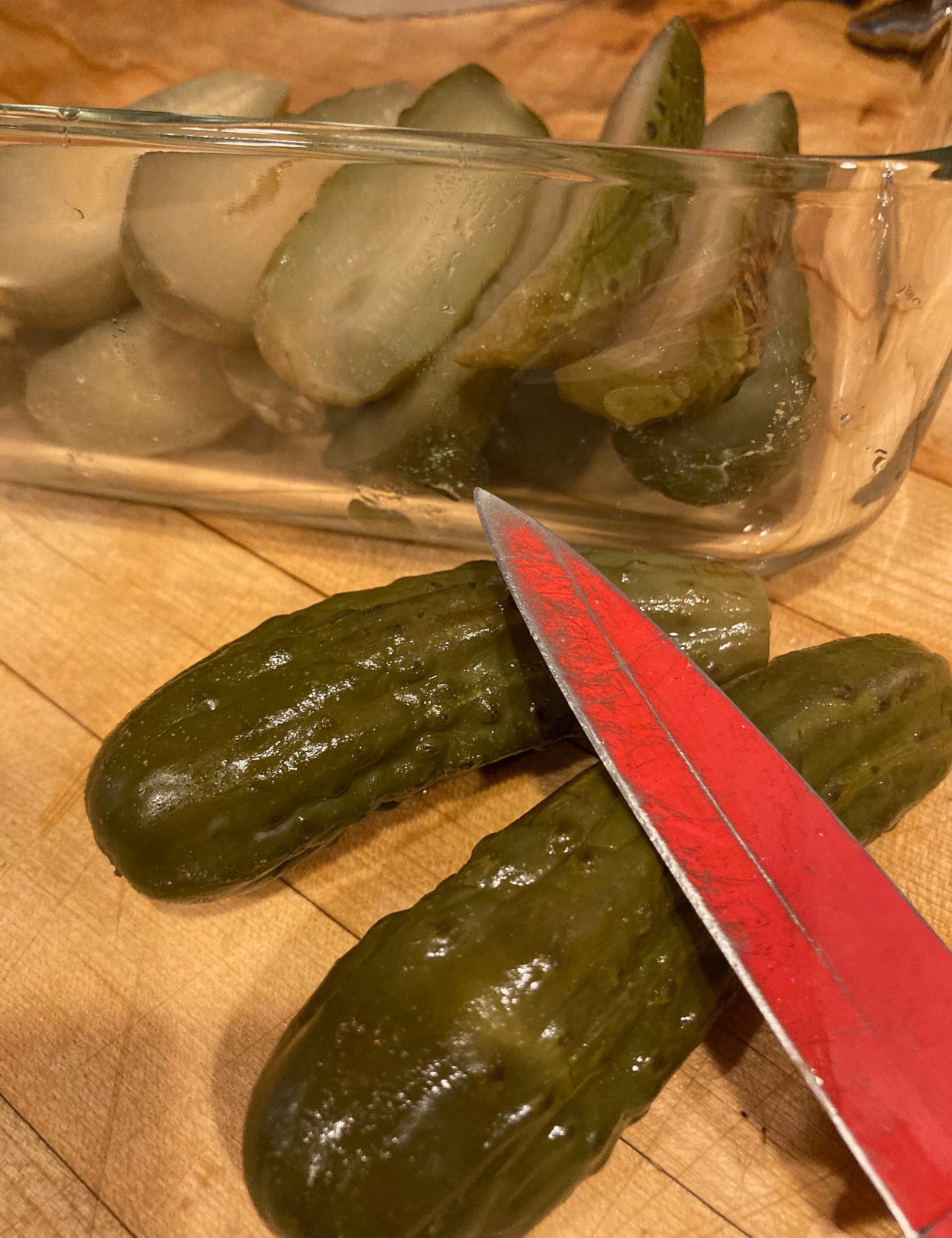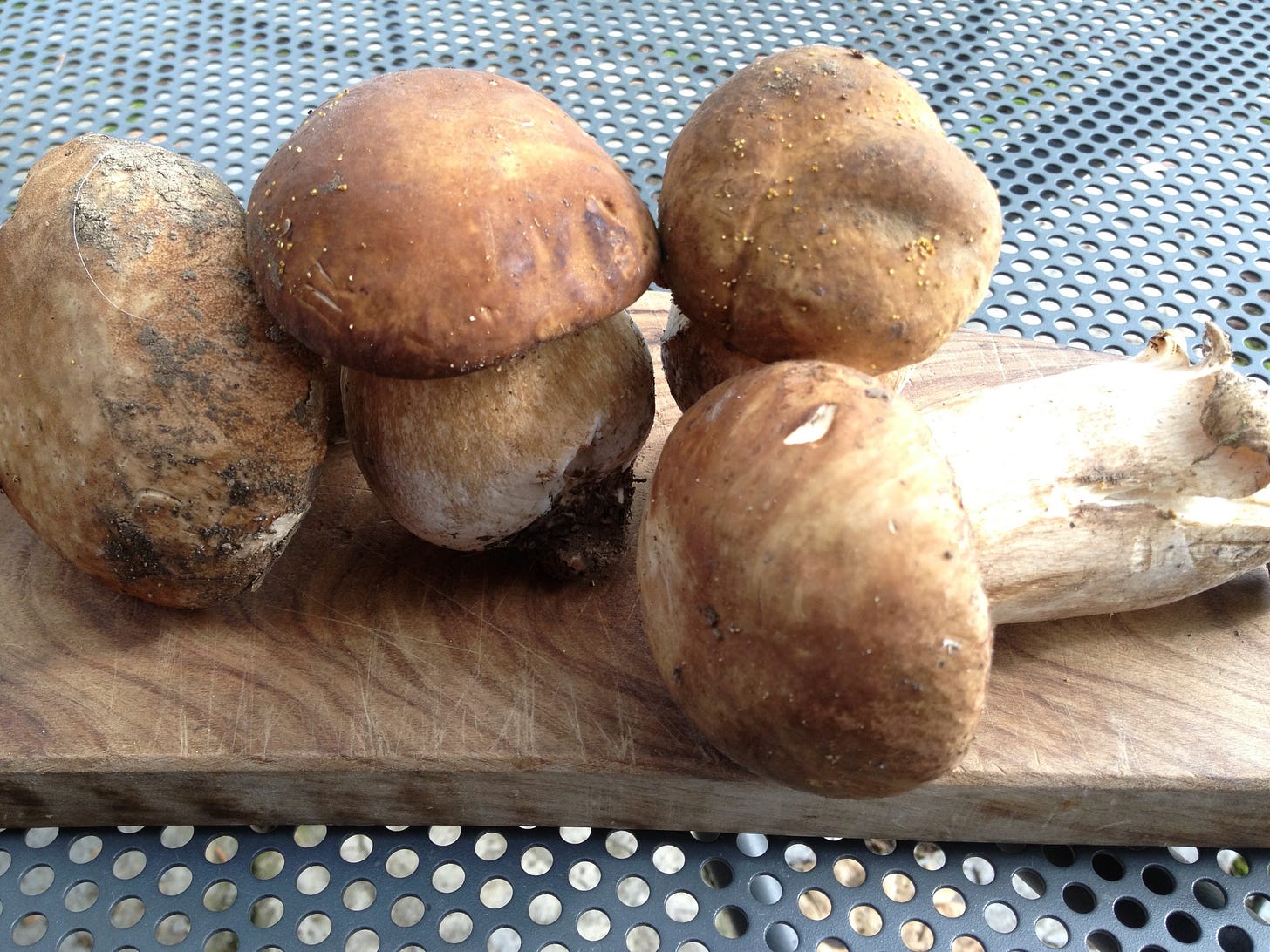Happy Valentine’s Day to All Who Celebrate!
Thoughts on the feast plus an entirely inappropriate wild mushroom ragù

The feast of St. Valentine has become a hugely important day for restaurants, almost as important as Mother’s Day but happily offering the adventurous chef a chance at a more elaborate menu than a Mother’s Day brunch, with its eggy, carb-laden dishes like the most popular of all, eggs benedict, the very thought of which is enough to send me straight back to bed.
Valentine’s Day is a very different challenge. Not everything on the menu has to be stained red or pink, although it helps to have pink wine and a heart-shaped dessert. The theory behind the menu seems to be that the feast is primarily for heterosexual couples and therefore by longstanding tradition the day that the guy entertains his girl, whether prospective or already secured. With that in mind, the menu has to be sturdy enough to satisfy guy tastes (read beef in some recognizable form) and fancy enough to gratify the girl, hence beef Wellington, a dish that in most quarters has long since seen its day but persists as the symbol of dated elegance. Hence, no delicious tripe, no tender liver, no savory sweetbreads (despite the name they are Organ Meats), no garlic and very few onions, no burgers, no pork sausages, and lamb only if it comes in the form of two little chops assembled in a heart on the plate. What else is there but beef Wellington?
Looking at some restaurant menus on line, my heart actually sinks at the offerings and the prices to go with them—oysters of course because oysters are notoriously aphrodisiac, caviar because it’s expensive as all get-out even though it’s all farmed, foie gras because it’s heart-stopping by its very nature, truffles just because, and as for beef—forget those Omaha steaks, it has to be Kobe Wagyu or it doesn’t count. At least for your Valentine.
I cannot find much information online about the Valentine’s Day dinner at Per Se, Thomas Keller’s super luxe New York City restaurant, except that it comes with an apéritif glass of Dom Perignon and costs a cool $1000. Per person. And sorry, but at this late date it is wait-list only. Two grand for what is doubtless a grand meal but I’m reminded of what my daughter said after dining there 20 years ago when the restaurant first opened: “The next time I’m tempted to spend $600 on dinner,” she said, “tell me to write a check to Oxfam instead.”
This is all very different from the way we celebrated Valentine’s when I was a kid. Back in the day, which means back in my day, it’s possible that my father brought home a box of chocolates for my mother, but otherwise it was strictly a kids’ holiday when we swapped Valentine cards with all our classmates. No one could be left out lest their feelings be hurt. The Valentines were assembled at home, often from a kit or a workbook, each card laboriously cut out, pasted together, and inscribed, then inserted in a red envelope for delivery at recess. Some were handmade, from red or pink construction paper and white doilies, but those were for special friends and teachers. The very best teachers might provide their young scholars with a bonus treat, perhaps heart-shaped cookies lavished with glittering sprinkles. I confess to liking the simplicity and inclusivity of our celebrations far more than a thousand-bucks-a-head meal, even with a glass of champagne thrown in.
Call me sentimental, but nostalgia has its merits.
Polenta with a Mushroom Ragù
(recipe from Flavors of Tuscany)
Last week I wrote about mushrooms (here), one of the few gustatory delights in deep midwinter at farm markets on the coast of Maine. That set me to thinking about how my Yankee forebears a century or more ago subsisted with a very restricted winter diet: root vegetables (beets, turnips, carrots, potatoes, rutabagas), stored apples, salt meat and salt fish, and not a green thing anywhere except from the pickle jar. You understand the overwhelming importance of pickles and relishes, sweets and sours, when you contemplate a diet like that—it cries out for the kick of something pungent.
In the hills of eastern Tuscany, where I’ve spent many winters in the past, the winter kitchen is a bit easier, first of all because winter comes on later, is never as extreme, and doesn’t last as long as it does in Maine. Still, the winter diet is hardly lavish. Tuscan neighbors in my mountain village got through winter with bottles of tomato sauce (pomarola) and jars of whole plum tomatoes put up in late August when the tomatoes were at their most flavorful. But there were also fresh winter greens, especially Tuscan kale (called lacinato kale in the U.S. and cavolo nero, black cabbage, in Italy), a strong, bitter green that stood out in the winter garden even under snow. And wine—just think how the taste of the fermented fruit of the vine would spark a winter meal in the same way that pickles did in Maine. And of course all the stored vegetables, squashes, chestnuts, corn—and mushrooms that had been sliced and dried in the late-summer sun, then stored in a clean pillow case to keep them from absorbing moisture and spoiling.
Sorry, but the following content is for paid subscribers only.
Keep reading with a 7-day free trial
Subscribe to On the Kitchen Porch to keep reading this post and get 7 days of free access to the full post archives.





